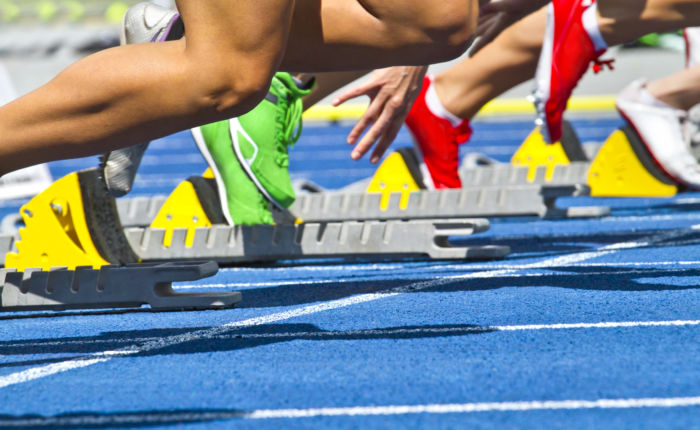Participation in sports is hugely beneficial for young people – and those benefits extend well beyond the physical realm. Young people who participate in sports experience improvements in social skills, self-esteem, academic skills, and are more likely to participate in health and wellness activities throughout their lifetime.
However, with all things positive and beneficial, there can be too much of a good thing. As more and more youth become involved in sports (nearly 30 million in the U.S. by CDC estimates) two phenomena are undermining the positive effects participation in sports can have on our youth.
Specialization and Professionalism – Treating Kids like Pros Well Before they’re Pros
Dr. James Andrews, whose surgical work with high-profile athletes has resulted in worldwide renown, states that specialization and professionalism are at the root of a rising epidemic that threatens the long-term musculoskeletal health of active young people. Of the more than 3.5 million sports-related injuries that occur in youth each year, approximately half are overuse injuries.
As a result of specialization – youth playing the same sport year round – and professionalism – training kids like they’re professional athletes – Dr. Andrews reports that young people are coming in with mature sports injuries that require operations and procedures designed for adults.
According to the American Academy of Orthopaedic Surgeons (AAOS), overuse injuries occur when the body performs a volume of repetitious movement, and then doesn’t have time to heal properly between competitions or practices. Consequences of overuse injuries in youth can include growth impairments and other long-term health problems.
Prevention really is the best medicine for overuse injuries
“The deal is, as sports physicians, we’ve all been amiss for years worrying about putting people back together and fixing things and new techniques,” Dr. Andrews said. “But we’ve largely ignored the real problem: prevention of injuries. Everybody now agrees that the time is right to keep these kids from getting hurt so often.”
In this spirit of prevention, Dr. Andrews helped to create the STOP (Sports Trauma and Overuse Prevention) Program with the sports-medicine society. Parents, coaches, and young athletes can find recommendations from STOP and from the AAOS for the prevention of overuse injuries below.
Steps to Prevent Overuse Injuries in Young Athletes:
- Don’t Play Year-Round: According to Dr. Andrews, young athletes should take a two-month break (at minimum; three to four months are most ideal) from a sport each year in order to allow their bodies to recover.
- Make Sure Athletes Warm Up Properly: This includes dynamic stretching, gradually raising the heart rate, and releasing musculoskeletal tension in order to help prevent injury.
- Use Proper Mechanics: Improper mechanics are bad for bodies and bad for performance. Having a professional evaluate mechanics and suggest improvements can have a dual positive effect of helping athletes prevent overuse injuries and improve their execution.
- Increase Training Level Gradually: Follow the 10 percent rule, which dictates that training activity, weight, mileage or pace should never be increased by more than 10 percent per week. This allows for ample recovery.
- Stop for Pain: According to the AAOS, frequent complaints of pain from young athletes (e.g., “My shoulder hurts,” “My elbow’s sore,” etc.) is an indicator that the athlete requires a period of rest from the sport. If pain persists, make an appointment with your family physician to see if any recourse beyond rest is required.
- Keep Lines of Communication Open: Kids will push themselves too hard at times, and they don’t always want to admit it. Regularly ask your child or teen open-ended questions about levels of activity and comfort to glean signs of pain or over-activity. Sometimes a sudden lack of motivation for a sport is a sign of discomfort and even burnout.
Prevention really is the best medicine for overuse injuries. If the idea of helping with biomechanics is something that seems a bit overwhelming, consider enlisting the help of a sports professional.
The sports professionals at SOL work with young people.
All of the trainers at SOL Performance have experience coaching young athletes, and have spent time working to help physical therapy patients perform rehabilitative exercise. They can help your young athlete develop sound biomechanics on a one-one basis, or can be consulted to create warm-ups and training regimens to help entire teams perform well with injury prevention in mind.
If pain is already an issue for your young athlete, we recommend asking your primary care physician if physical therapy is appropriate. In addition to their ability to assess and correct problematic movement patterns, all of our physical therapists are active individuals who understand how frustrating it can be to be sidelined by pain. They are passionate about helping young people understand and practice the kind of sound biomechanics that help get them back in the game without needing surgery or pharmaceuticals.
RESOURCES:
American Academy of Orthopaedic Surgeons: Overuse Injuries in Children
The Plain Dealer (Cleveland.com): Noted surgeon… wants your young athlete to stay healthy…
STOP Sports Injuries: Youth Sports Injuries Statistics
STOP Sports Injuries: When Play is Too Much
STOP Sports Injuries: How to Prevent and Stop Overuse Injuries in Kids
Stanford Children’s Health: Sports Injury Statistics
Why Should Children Play Sports?


